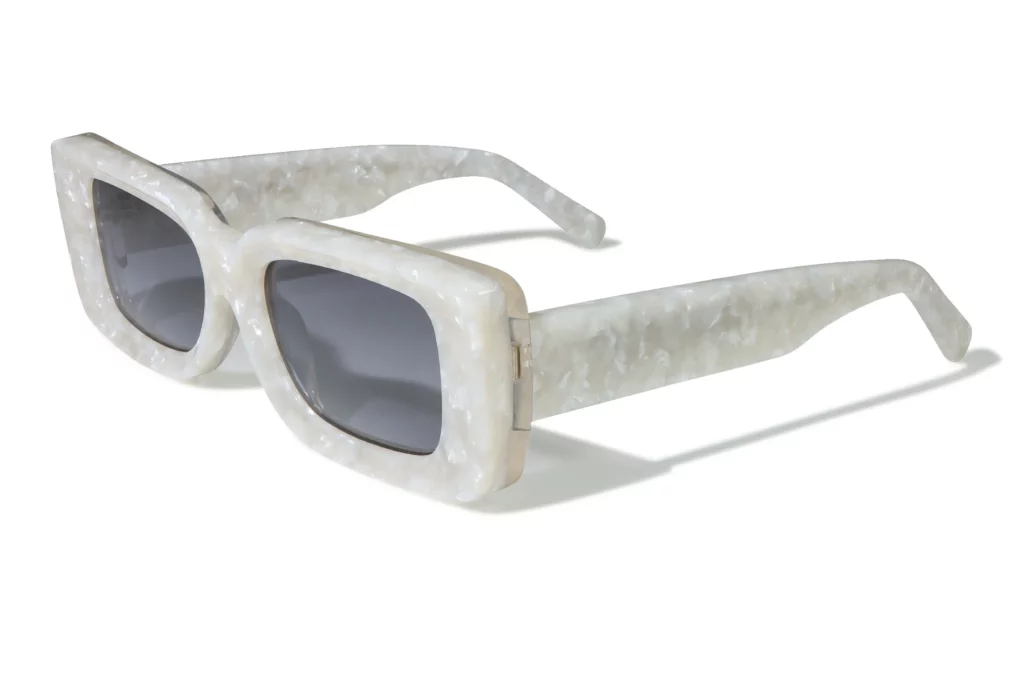Building a custom logo sunglasses line is one of the most effective ways for your brand to merge powerful visibility with practical, everyday use. With over 90% of the world’s frames produced in China, you have an incredible opportunity for cost-efficient production. This guide gives you the expert framework for transforming that complex sourcing process into a reliable, profitable supply chain.
Custom logo sunglasses sourcing requires mastering two elements: defining precise product specifications that match your brand’s identity and goals, then finding manufacturing partners with proven technical skill, robust quality control, and scalable capacity. Your success depends on understanding materials like acetate versus TR-90, evaluating lens technologies, and implementing quality frameworks that guarantee consistency from the first prototype to mass production.
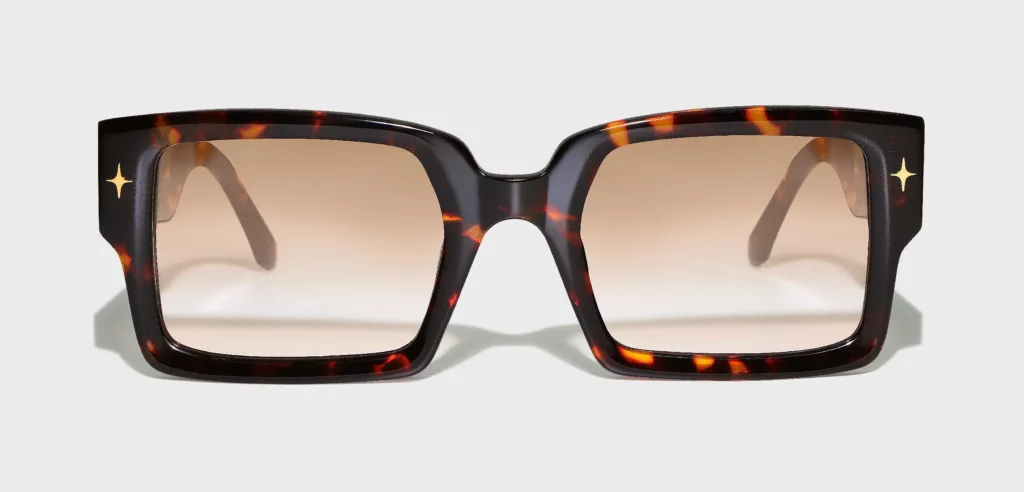
The Blueprint: Defining Your Product Strategy & Brand DNA
From Vision to Viability: Aligning Product with Audience & Business Model
Your journey into custom logo sunglasses starts by cementing your strategic position. Your product specifications must go beyond aesthetics to reflect the commercial realities that drive long-term profit. With approximately 120 million sunglasses sold in the US alone in 2023, the market opportunity is substantial for a well-planned brand. This initial strategy is the foundation for every sourcing decision you’ll make.
Choosing Your Go-to-Market Strategy
Your business model directly shapes your sourcing and manufacturing needs. Each path has distinct requirements for investment and minimum order quantities (MOQs).
- Private Label: This path offers you greater profit margins but typically requires higher MOQs, often 200-500 pieces per design from established makers.
- Wholesale Distribution: Success here depends on consistent quality and competitive pricing that allows retailers to mark up your product while you maintain profitability.
- Direct-to-Consumer (DTC): You gain maximum control over your brand and customer experience. DTC often allows for lower initial MOQs, around 100-200 pieces per style, which is ideal for testing the market before scaling up.
Best Practice: Evaluate your target market and financial resources before committing. A private label launch typically requires a $10,000-$50,000 initial inventory investment, whereas a DTC test run can begin with $5,000-$15,000.
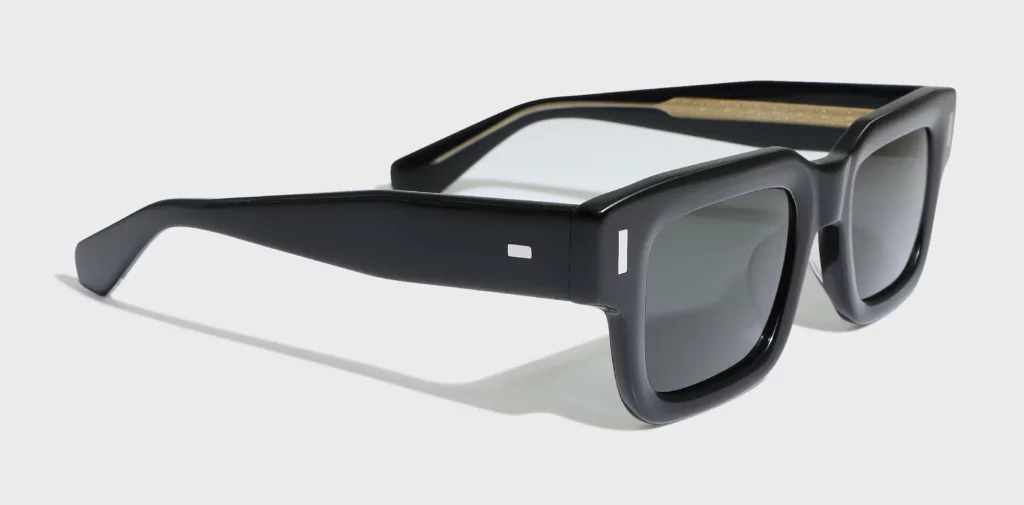
Defining Your Customer Profile & Niche
Your target market dictates your material choices, pricing, and quality standards.
- Luxury Fashion: This segment demands premium materials like Italian Mazzucchelli acetate and titanium hardware. Expect manufacturing costs of $15-$40 per piece to support retail prices of $150-$500.
- Sportswear: Here, function trumps form. You’ll focus on impact-resistant polycarbonate lenses, lightweight TR-90 frames, and wraparound designs for full UV protection.
- Eco-Conscious: These buyers seek sustainable materials like bio-acetate, recycled metals, or wood. They are often willing to pay a premium for products they feel good about.
- Promotional: This segment is about cost-efficiency and speed. You’ll use injection-molded plastic frames and basic lenses, requiring MOQs of 500-2,000 pieces to hit a target price of $2-$8 per piece.
Translating Brand Identity into Tangible Product Attributes
Your brand’s story and values must be evident in the physical product. If you’re positioning as a premium brand, your materials and construction must justify that higher price. Your color palette should reflect your brand’s personality, but you need to consider manufacturing limits.
Example: Requesting a custom color for an injection-molded frame often requires an MOQ of 300-500 pieces, while acetate offers much more color flexibility at lower quantities.
Pro Tips: Develop a comprehensive brand style guide. Include specific Pantone color codes, list acceptable material substitutions, and define your quality benchmarks. This document becomes an invaluable tool for clear communication with your manufacturer.
Creating a Comprehensive Business Plan, Budget, and Pricing Strategy
Your financial plan must account for the total cost of ownership, which extends far beyond the per-unit price. You need to budget for tooling costs for custom molds ($2,000-$8,000), packaging development ($500-$2,000), and international compliance testing ($1,000-$3,000). Your pricing must also support the entire distribution chain. A product that costs you $10 to manufacture needs a wholesale price of $20-$25 to give your wholesale customers a 50-60% margin, which in turn allows a retailer to price it at $40-$50.

Architecting the Frame: Key Decisions in Design, Materials, and Construction
Your frame’s architecture dictates its look, feel, and performance. In my two decades crafting handmade eyewear, I’ve consistently observed that the most successful brands master the balance between material properties and construction techniques to align quality, cost, and brand identity.
The Material Matrix
Choosing your frame material is one of the most critical decisions you’ll make, impacting cost, durability, and brand perception.
| Material | Cost Range/Frame | Durability | Weight | Customization | Best Applications |
| Mazzucchelli Acetate | $12 – $30 | Excellent | Medium | High | Luxury fashion, premium brands |
| Standard Acetate | $6 – $15 | Good | Medium | High | Mid-market fashion |
| TR-90 Nylon | $4 – $12 | Excellent | Light | Medium | Sports, active lifestyle |
| Stainless Steel | $8 – $25 | Excellent | Heavy | Low | Professional, classic styles |
| Titanium | $15 – $40 | Exceptional | Light | Medium | Premium performance |
| Injection Plastic (PC) | $2 – $8 | Moderate | Light | Low | Promotional, budget |
Best Practice: For a new luxury line, nothing communicates quality like Italian Mazzucchelli acetate. For a high-performance sports line, the flexibility and impact resistance of TR-90 nylon offer a clear functional advantage that justifies a higher retail price.
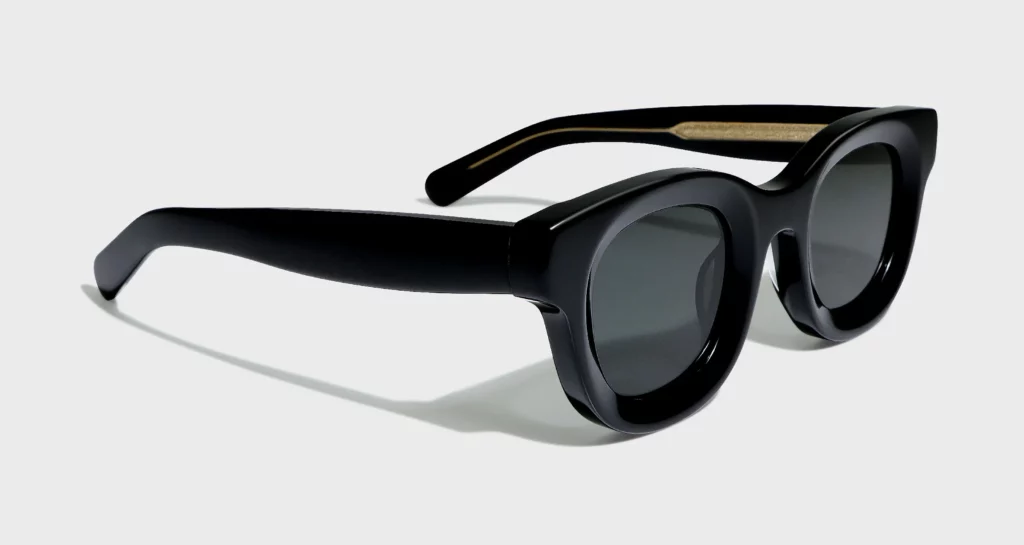
Beyond Materials: Impact of Hinge Type, Temple Core Wires, and Nose Pads
The small components have a huge impact on perceived quality and durability. Spring hinges add comfort and longevity, justifying an extra $2-$5 in manufacturing costs. The core wires inside your temples determine their flexibility and strength, while silicone nose pads offer superior comfort for all-day wear. These details add minimal cost but dramatically enhance the user’s experience.
Critical Warning: Never cut costs on hinges and core components. A failed hinge leads to customer complaints and warranty claims that will cost you far more than the initial savings.
The Mold Decision: Custom Molds vs. Open-Mold Designs
You can use a manufacturer’s existing “open-mold” design to avoid tooling costs, which is fine for promotional products but weakens a premium brand’s position. Developing a custom mold is a significant investment, typically costing $2,000-$8,000, but it gives you a proprietary design that you can protect and build a brand around.
Key Metric: A custom mold becomes cost-effective once your total production volume exceeds 2,000-3,000 pieces, assuming a $5,000 mold cost that you want to amortize down to about $2 per piece.
Evaluating Frame Shapes, Ergonomics, and Overall Fit
Your frame’s geometry must be comfortable for your target consumer. You need to consider details like “Asian fit” specifications, which require different nose bridge angles and temple lengths than Western designs. Ergonomics also includes weight distribution and pressure points.
Example: A luxury fashion frame for a professional might use lightweight acetate with adjustable nose pads, while a sports frame would prioritize a TR-90 wraparound design with anti-slip temple grips for performance during activity.
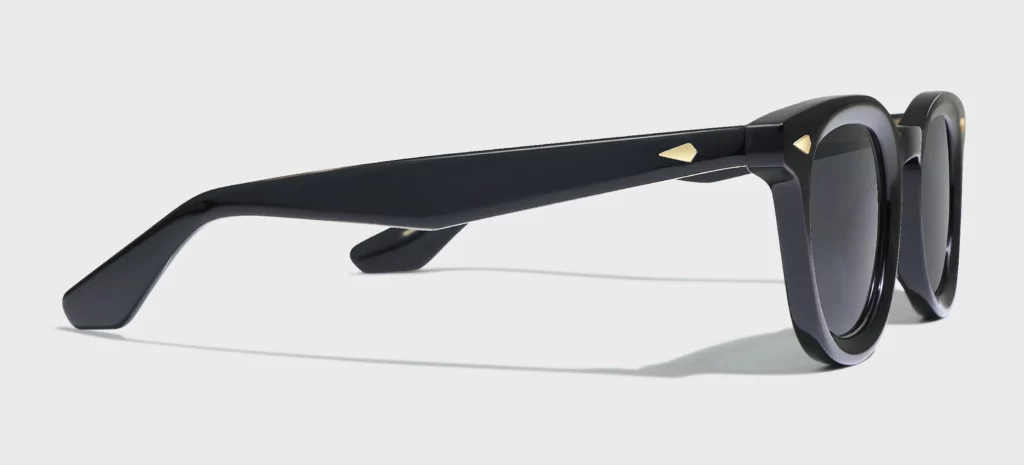
Engineering the Lens: A Guide to Optical Technology and Performance Coatings
The lens is the functional heart of your product. Your choices here directly affect user safety, visual clarity, and the value your customers perceive in your sunglasses.
Selecting the Right Lens Material for Your Price Point and Use Case
| Lens Material | Key Characteristics |
| Polycarbonate | The industry standard. Offers exceptional impact resistance and is lightweight. Meets all major safety standards and is very cost-effective. |
| Trivex | Superior optical clarity compared to polycarbonate with similar impact resistance, but at a higher cost. Best for premium applications where visual performance is key. |
| CR-39 Plastic | Excellent optical clarity at a low cost, but lacks the impact resistance needed for many safety standards. Suited for low-stress fashion applications. |
| Glass | Unmatched optical clarity and scratch resistance, but is heavy and poses safety risks if shattered. Now typically reserved for niche uses like aviation sunglasses. |
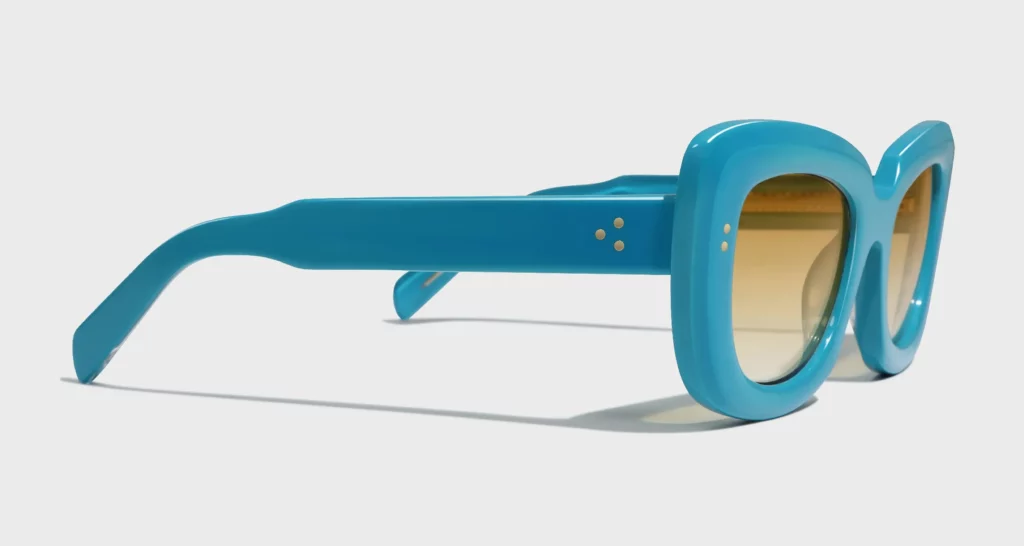
A Deep-Dive into Functional Lens Coatings and Their Market Value
Ensuring Full Spectrum UV Protection (UVA/UVB, UV400) as a Baseline Standard
UV400 protection is the absolute minimum safety standard for any pair of sunglasses you produce. It blocks all harmful UVA and UVB rays up to 400 nanometers. This protection adds very little cost—typically $0.20-$0.50 per lens—but is essential for protecting your customers’ vision.
Critical Warning: Never compromise on UV protection to save a few cents. Selling sunglasses with substandard UV filtering exposes your customers to serious eye damage and creates a massive liability for your brand.
The Strategic Use of Polarization for High-Performance Glare-Reduction
Polarized lenses are a powerful functional upgrade that reduces glare from reflective surfaces like water, snow, and asphalt. This technology is a significant value-add, typically adding $3-$8 to your manufacturing cost but allowing you to increase the retail price by $20-$50. It’s a key feature for any brand targeting driving, fishing, skiing, or other outdoor activities.
Leveraging Performance Coatings
- Anti-Scratch: A hard coat extends the life of the lens and maintains optical clarity. It adds $0.50-$1.50 per lens but greatly improves user satisfaction.
- Anti-Reflective (AR): This coating reduces internal reflections that can cause eye strain, especially in wraparound designs.
- Hydrophobic & Oleophobic: These coatings repel water and oil, making the lenses easier to clean and keeping vision clear in challenging weather.
Best Practice: For a premium product, strategically layer multiple coatings. A high-performance lens might feature UV400 protection, polarization, an anti-scratch hard coat, and a hydrophobic coating for comprehensive functionality.
Niche Lens Technologies
- Photochromic: These lenses automatically darken in response to UV light, offering incredible versatility. This feature can add $8-$15 to your production cost but positions your product in a premium, high-tech category.
- Blue Light Blocking: This technology has become popular for users of digital devices. While a subject of debate, consumer demand has made it a common feature in both fashion and computer eyewear.
- Custom Gradient Tints: Gradients offer a unique aesthetic that can help your brand stand out. They require extra processing but create a distinctive look that supports a premium price.
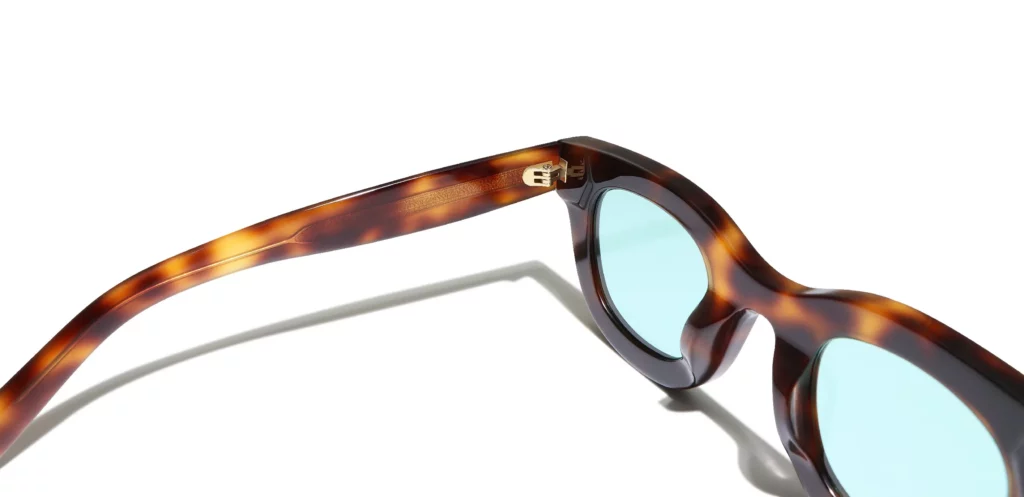
Finalizing the Details: Customization, Branding, and Technical Specifications
The final touches distinguish a professional-grade product from a commodity one. These details, though small parts of the total cost, often drive a customer’s purchase decision.
Choosing the Right Logo Application
Your logo application method affects durability, perceived quality, and cost.
| Method | Cost/Piece | MOQ | Best For |
| Screen Printing | $0.30 – $0.80 | ~100+ | Cost-effective promotional use |
| Laser Engraving | $1.00 – $3.00 | ~100+ | Durable, premium look on metal/acetate |
| Embedded Metal Logo | Varies | ~500-1,000 | Highest perceived value, distinctive branding |
Pro Tips: Always test your logo applications on physical samples before a full production run. Check the durability, appearance, and cost to ensure it aligns with your brand’s quality standards.
The Tech Pack: The Essential Manufacturing Blueprint
Your tech pack is the single most important document for eliminating ambiguity and ensuring consistent quality. It should contain detailed drawings, material specifications, Pantone color references, hinge details, and assembly instructions. This blueprint is what enables a manufacturer to produce your design exactly as you intended.
Creating a Premium Unboxing Experience
The customer’s first interaction with your product is the packaging. A great unboxing experience reinforces brand value.
- Custom Cases: A quality hard case adds $2-$5 per unit but creates a premium feel that enhances brand perception.
- Branded Accessories: A microfiber cleaning cloth and an info card add functional value for about $0.50-$1.50 per set.
- Sustainable Packaging: Using recycled or biodegradable materials can cost 20-50% more but strongly appeals to eco-conscious consumers.
Example: A luxury eyewear brand could use a custom wooden case with a magnetic closure, an embossed microfiber cloth, and recycled paper packaging to create a memorable experience that screams quality.
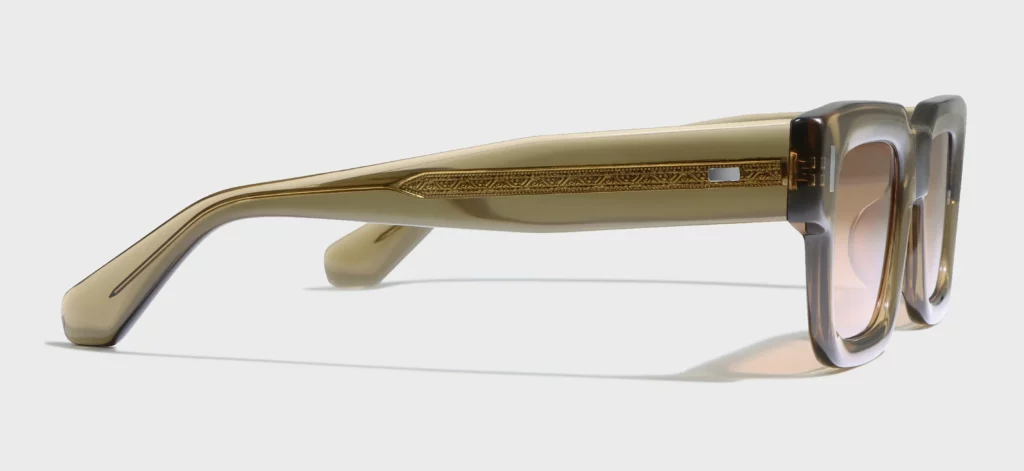
The Search: Identifying, Vetting, and Qualifying the Right Manufacturing Partner
Building Your Sourcing Strategy: Where and How to Find Potential Partners
Leveraging Digital Platforms
B2B marketplaces are a powerful tool for finding potential suppliers. Alibaba is the dominant platform for connecting with its 3,000+ verified eyewear suppliers in China. You should focus your search on suppliers with “Gold Supplier” and “Trade Assurance” designations who specialize in eyewear, not general accessories. European platforms like Wonnda offer access to verified manufacturers with high quality standards, though typically at a higher price.
Best Practice: Run parallel searches on multiple platforms. This maximizes your options and gives you more leverage during negotiations.
The Human Element: Sourcing Agents and Trade Shows
A professional sourcing agent provides local expertise and an established network, which streamlines the vetting process. They typically charge 3-8% of your order value but offer immense value in negotiation and quality oversight. Attending major industry trade shows like MIDO in Milan or Vision Expo in the US is invaluable. These events allow you to meet suppliers face-to-face and evaluate their capabilities directly.
Key Metric: Attending a trade show might cost you $5,000-$15,000, but it gives you direct access to over 100 potential suppliers in just a few days—an effort that would take months of digital outreach.
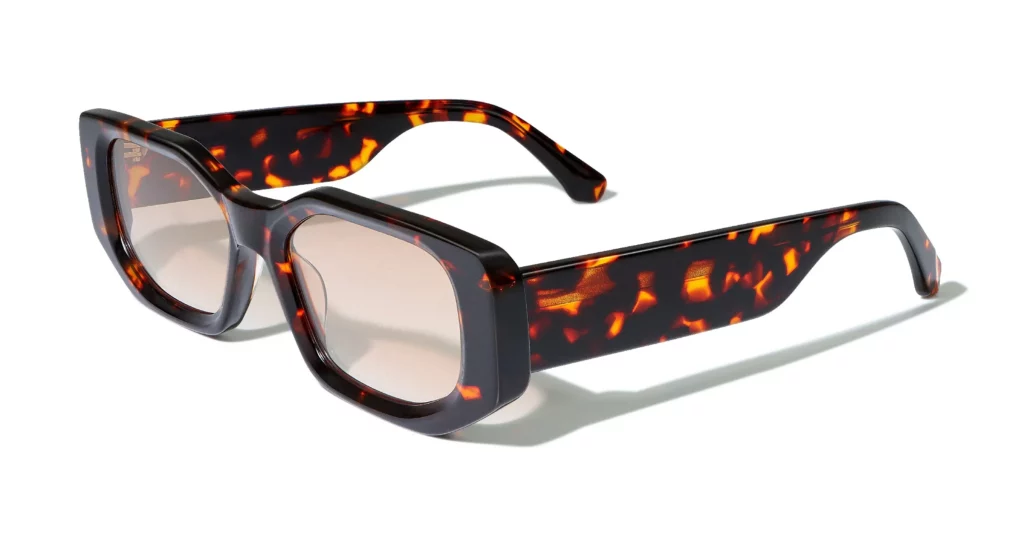
Understanding Manufacturing Ecosystems
- Italy: The Belluno region is the pinnacle of luxury eyewear production, delivering unmatched quality and the prestige of the “Made in Italy” label at a premium price.
- China: With 90% of the market share, China offers a vast ecosystem from budget promotional items to high-end luxury frames, with technical clusters in cities like Wenzhou and Dongguan.
- Vietnam & SE Asia: These regions offer competitive cost structures and are becoming popular options for brands looking to diversify their supply chain beyond China.
The Initial Vetting Process: From Long List to Shortlist
Crafting a Request for Quotation (RFQ)
Your RFQ should provide detailed product specs, quantity tiers, and delivery timelines to ensure you get back bids that you can compare directly. Ask for a price breakdown that separates tooling, materials, and labor so you can understand the supplier’s cost structure.
Critical Warning: Avoid sending an overwhelmingly detailed RFQ initially. Stick to the essential specifications and save the highly detailed technical pack for your shortlisted, qualified suppliers.
Initial Due Diligence
Quickly verify a potential supplier’s legitimacy by checking their business license and industry experience. Ask for examples of similar projects they’ve completed. A professional website and clear communication are often good indicators of a well-run operation.
Decoding Service Models
- OEM (Original Equipment Manufacturing): You provide the full design, and the supplier manufactures it for you.
- ODM (Original Design Manufacturing): The supplier offers existing designs that you can brand and slightly modify.
- Private Label: A comprehensive service where the supplier handles design, manufacturing, and packaging for your brand.
Identifying Early Red Flags
Be wary of suppliers who provide vague answers, have poor communication, or offer pricing that seems too good to be true. Unrealistic prices usually signal that quality will be compromised or that hidden costs will appear later. Transparency from the start is a sign of an honest partner.
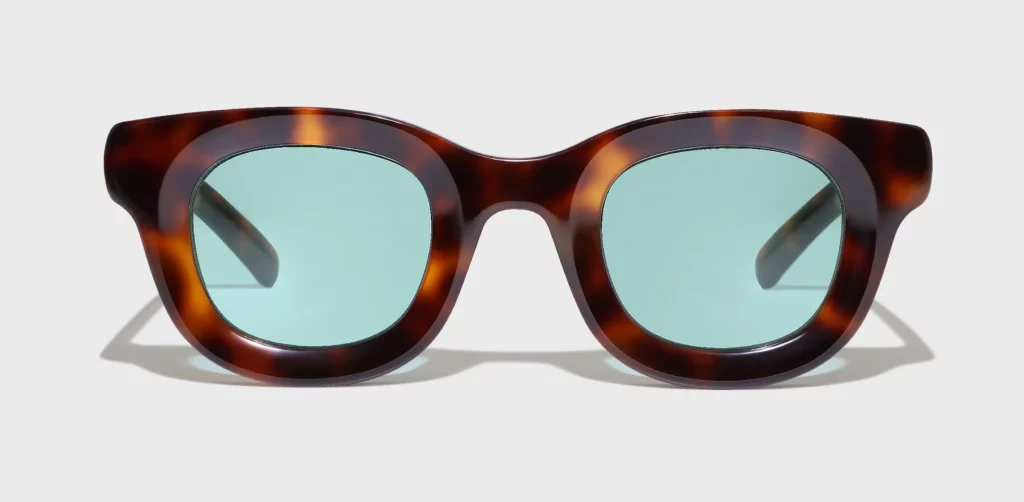
Deep-Dive Qualification: Auditing for Quality, Compliance, and Capability
Assessing Technical Prowess
Evaluate a supplier’s engineering support by asking for their input on your designs and material choices. A good partner can help you optimize for manufacturing. Their ability to produce accurate prototypes quickly is a direct reflection of their technical skill.
The On-Site or Virtual Factory Audit
An audit, whether in-person or virtual, reveals the reality of a supplier’s operations. Look at their equipment, production line organization, and quality control systems.
Pro Tips: For a virtual audit, use a video call to tour the facility. Ask to see the production lines, QC stations, and raw material storage areas. This gives you a strong sense of their capabilities without the cost of travel.
Verifying International Compliance
Ask for quality and safety certifications. An ISO 9001 certificate validates their quality management system. For the product itself, certifications like ANSI Z80.3 (US) and EN ISO 12312-1 (Europe) are mandatory for market access and show a serious commitment to quality.
Evaluating Sample Products
Documentation can only tell you so much. You must get your hands on physical samples to assess true craftsmanship. Evaluate the material quality, construction precision, hinge operation, and the overall fit and finish. This is the ultimate test of a manufacturer’s capabilities.
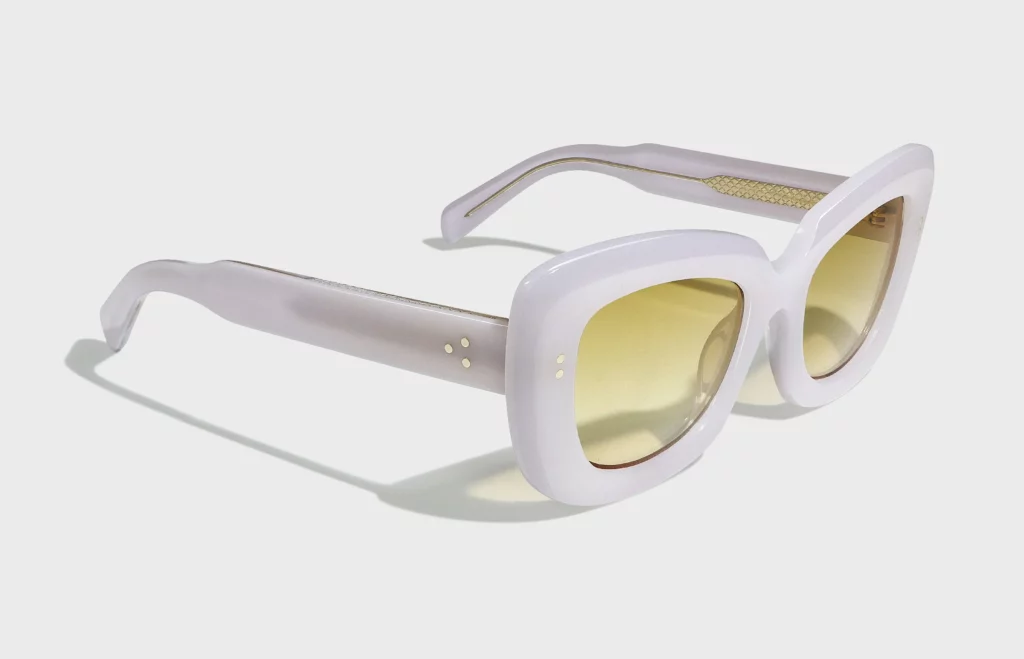
The Execution: Managing Production, Quality Assurance, and the Supply Chain
From Handshake to Contract: Formalizing the Partnership
A Framework for Negotiating MOQs, Tiered Pricing, and Production Lead Times
Standard MOQs for custom eyewear range from 300-1,000 pieces per style. You can often negotiate tiered pricing that lowers your per-unit cost as your volume increases. Production lead times are typically 25-45 days for existing designs and 35-60 days for projects requiring new custom molds.
Key Metric: A realistic timeline from order confirmation to shipment is 42-66 days. This includes 7-14 days for sampling, 5-7 days for your approval, and 30-45 days for mass production.
Establishing Clear Payment Terms and Incoterms
Standard payment terms with Chinese suppliers are a 30% deposit to start production and the remaining 70% balance due before shipment. You must also agree on Incoterms, which define who is responsible for the goods at each stage. FOB (Free on Board) is common and means the supplier is responsible for getting the goods to the departure port; it’s generally a good choice for you as the buyer.
Protecting Your Brand: Key Contract Clauses
Your manufacturing agreement must include clauses that protect your intellectual property (IP), define quality standards, and establish a clear defect policy. This prevents your supplier from selling your design to others and outlines what happens if quality issues arise.
Critical Warning: Your contract must have a clause specifying that you own your custom molds and tooling upon final payment. This prevents a supplier from holding your molds hostage in a dispute.
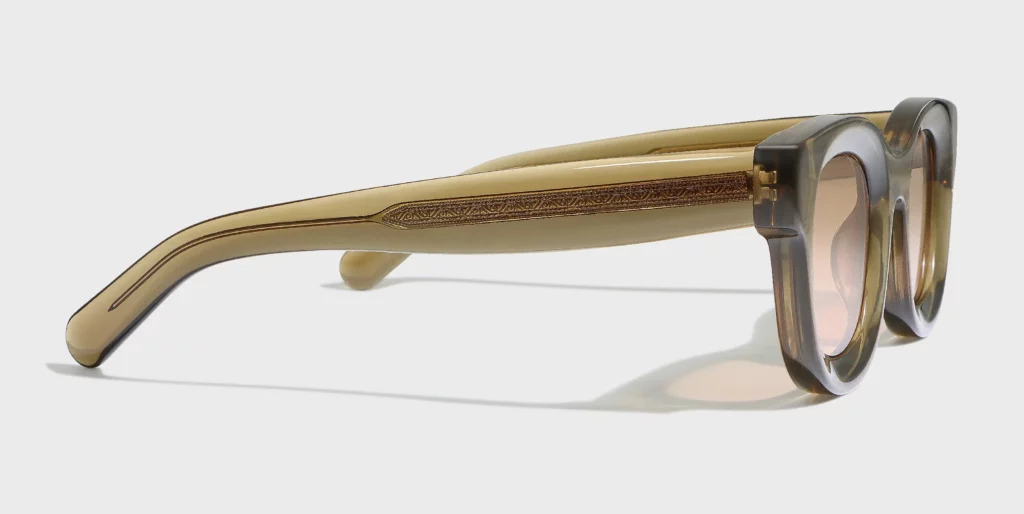
The Critical Path of Sampling
Best Practices for Reviewing and Approving Pre-Production Samples (PPS)
The PPS is your last chance to confirm every detail before mass production begins. It should be made with the exact materials and processes of the final product. Use a detailed checklist to evaluate everything from dimensions to color to function before giving written approval.
Best Practice: Photograph your approved PPS from every angle and keep detailed notes. This documentation becomes an unambiguous reference for quality control during production.
Establishing the “Golden Sample”
The approved PPS becomes your “Golden Sample”—the ultimate benchmark for quality. All subsequent production units must meet or exceed this standard. You should keep this sample on hand to make direct comparisons throughout the production run.

Implementing a Robust Quality Assurance (QA) Framework
Defining Your Eyewear Sourcing Manual and Acceptable Quality Limits (AQL)
An AQL is a statistical tool that defines the maximum number of defective units that can be considered acceptable during a random sampling of a production batch. For eyewear, AQL levels of 1.5 to 4.0 are common, with stricter limits on critical safety features. This should be part of a larger sourcing manual that documents all your quality standards.
The Role of In-Process Quality Control (IPQC) and Pre-Shipment Inspections (PSI)
IPQC means checking for issues during production, not just at the end, which is far more efficient. For added security, you can hire a third-party inspection company to perform a Pre-Shipment Inspection (PSI). A PSI typically costs $200-$500 and provides an independent, objective report on your order’s quality before it ships.
Key Physical & Mechanical Tests
Your QA plan should include specific performance tests:
- Impact Testing: The “drop ball” test is required by standards like ANSI Z80.3 to verify lens safety.
- Hinge Cycling: A quality hinge should withstand 10,000 to 25,000 open-and-close cycles without failure.
- Coating Adhesion: Standardized tape tests confirm that your lens coatings will not flake or peel.
- Frame Durability: Stress tests, temperature cycling, and UV exposure simulate real-world use conditions.
Pro Tips: Your testing protocols should reflect how your product will actually be used. The stresses on a pair of fashion frames are very different from those on sunglasses designed for extreme sports.

Managing Global Logistics and Importation
Selecting the Right Shipping Method
This is a classic trade-off between speed and cost.
| Method | Transit Time | Cost/Piece (Est.) | Best For |
| Sea Freight | 25-35 days | $1 – $3 | Large, non-urgent orders |
| Air Freight | 5-10 days | $3 – $8 | Urgent orders, higher-value goods |
| Express Courier | 3-5 days | $8 – $15 | Samples, very small orders |
Key Metric: The break-even point where air freight’s speed justifies its cost over sea freight is typically for shipments of 500-1,000 pieces, depending on your product’s value and your urgency.
Working with Freight Forwarders
A good freight forwarder is essential for navigating international shipping. They handle customs clearance, duties, and all the required documentation. Customs duties for eyewear imported into the US are typically 2-8%. A forwarder’s expertise helps ensure your shipment doesn’t get delayed.
Critical Warning: Never attempt to undervalue your shipment on commercial invoices to save on duties. This is illegal and can lead to fines and seizure of your goods.
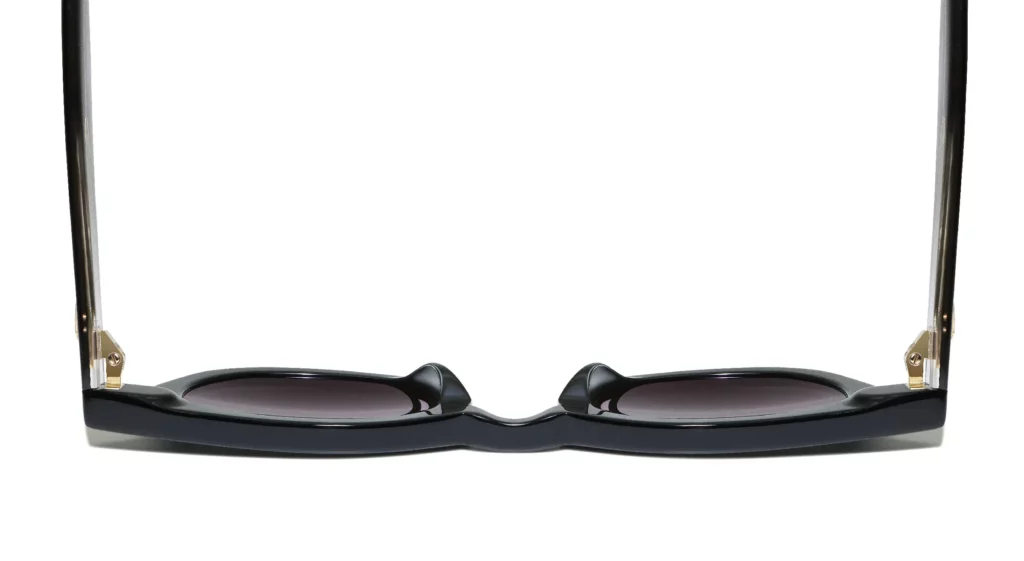
The Launch: Bringing Your Product to Market and Scaling for Growth
Preparing for Market Entry and Sales
Developing Your Marketing & Sales Strategy
Your launch plan should be ready before your inventory arrives. E-commerce platforms like Shopify give you complete brand control, while marketplaces like Amazon offer built-in traffic. Eyewear is highly visual, making platforms like Instagram and TikTok ideal for showing off your product through lifestyle imagery and influencer partnerships.
Example: A premium sunglasses brand could launch with a dedicated Shopify store, run an Instagram campaign with adventure lifestyle influencers, and use professional photography to build a strong brand image from day one.
Setting up Inventory Management and Fulfillment Logistics
You can manage fulfillment in-house, but using a third-party logistics (3PL) provider is often more scalable. A 3PL handles your warehousing and shipping for a fee, typically $3-$8 per shipment plus storage. This frees you up to focus on growing your brand. Dropshipping is another option that eliminates inventory risk but gives you less control over quality and the customer experience.
Creating Compelling Product Listings
Translate your product’s technical features into clear customer benefits. “UV400 protection” becomes “all-day protection for your eyes,” and “polarization” becomes “crystal-clear, glare-free vision.” Use professional lifestyle photography so customers can see themselves using your product.
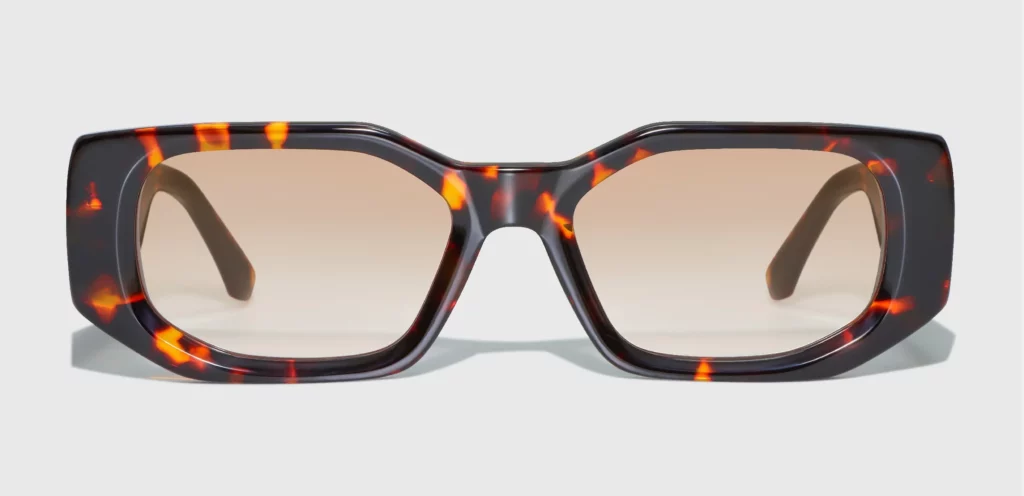
Post-Launch Strategy and Business Scaling
Leveraging Customer Feedback and Sales Data
Your work isn’t done at launch. Use customer feedback from reviews and surveys to guide future product improvements. Analyze your sales data to see which styles and features are most popular, and use that information to plan your next production run and expand your product line.
Planning for Future Growth
Successful eyewear brands often expand from sunglasses into prescription frames or other adjacent categories. As you grow, explore new distribution channels like retail partnerships or international markets to reach new customers.
Building a Long-Term, Collaborative Relationship with Your Manufacturing Partner
The best supplier relationships evolve into strategic partnerships. Open communication, mutual trust, and shared goals lead to better pricing, priority production scheduling, and collaborative innovation that benefits both of you.
Best Practice: Treat your key suppliers like true partners, not just vendors. Share your growth plans with them, give them performance feedback, and involve them in developing new products. A strong partnership is a powerful competitive advantage.
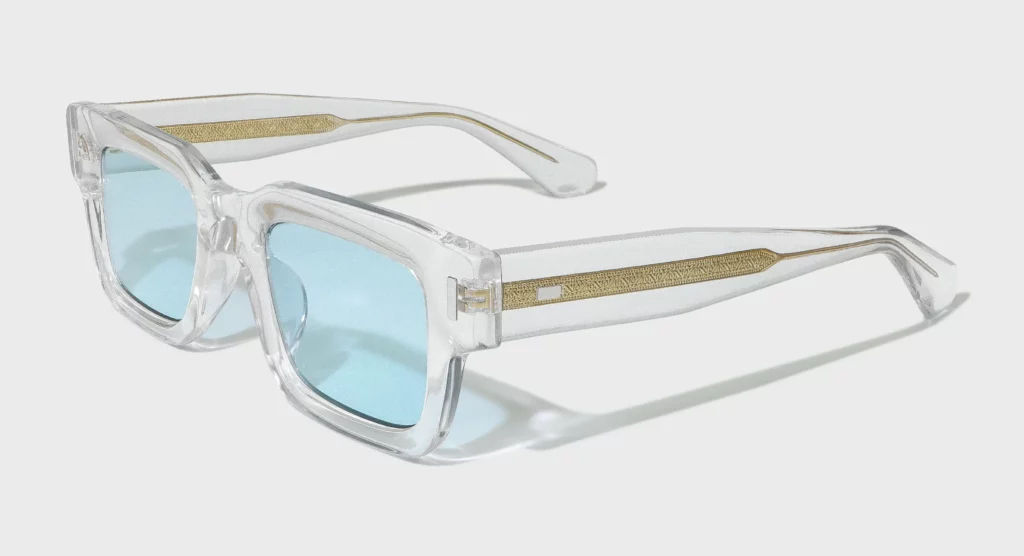
Conclusion
Mastering custom sunglasses sourcing comes down to a dual focus on sharp product strategy and rigorous supplier management. By systematically defining your materials, locking in quality control, and managing logistics, you build a reliable supply chain. Our expertise in guiding partners through every decision—from choosing between Italian acetate and TR-90 to implementing AQL frameworks—ensures your successful entry into the market and paves the way for sustainable growth. Contact us to build a world-class supply chain for your eyewear brand.
Frequently Asked Questions
1. What is the cost-benefit of a custom mold vs. an open mold?
A custom mold costs $2,000-$8,000 but becomes cost-effective above 2,000-3,000 units. It gives you a unique, protectable design that justifies premium pricing. An open mold has no upfront cost but offers zero differentiation from competitors.
2. What specific lens coating tests should I request in a QC report?
Beyond the UV400 report, ask for water contact angle tests for hydrophobic claims and tape-pull tests for coating adhesion and durability. For premium claims, a supplier should be able to provide reports on these physical tests to validate performance.
3. How can a dropshipping brand control quality?
You must implement a robust, supplier-managed QC process. This includes providing a detailed tech pack, setting AQL standards, and hiring an independent third-party service to conduct pre-shipment inspections on your behalf before orders are sent to customers.
4. What are the key differences between EU (EN ISO 12312-1) and US (ANSI Z80.3) standards?
The EU standard has more stringent requirements for optical quality, while the US standard places a greater emphasis on impact resistance (the drop ball test). A quality manufacturer must be able to test for and certify compliance with both standards for you to sell in both markets.
5. How can I negotiate if a manufacturer’s MOQ is too high?
Propose a smaller initial test order with a commitment for a larger follow-up order. You can also ask if a higher per-unit price would be acceptable for a smaller quantity. Sometimes, combining orders for multiple styles can help you meet a factory’s overall MOQ.

